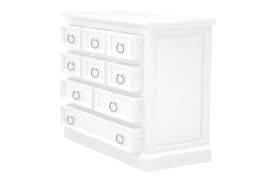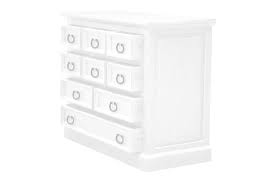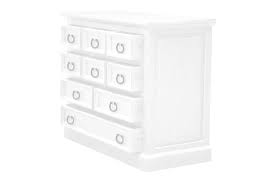Remember that it is easy to cut yourself badly when sharpening a sword. The system has given 20 helpful results for the search how to sharpen a katana sword.

Handmade Collector Folding Black Brown Handle Art Knife
If you’re using a whetstone, you’ll always want to soak it before you start sharpening.

How to sharpen a sword with sandpaper. Now generally, it is not recommended to use power tools in a casual manner as the friction will heat up the blade, ruining the temper. As you sharpen, the oil will become discolored from blade and stone residue. Start with the 400 grit sandpaper and move your blade uniformly towards you.
Remove all moist by letting in air throughout the blade’s surface. To sharpen a katana using japanese sword sharpening techniques, you can use automotive dry paper with leather, and slowly polish the blade. You need to soak your stones in water for at least 20 minutes.
But i found the best way is the classic way: I like to pour some water directly on the stone as well for more lubrication. If the sword was totally dull, this will take a while.
First, you’ll need a plate of glass, some wet or dry sandpaper, and some water. My question relates to the use of sandpaper. By sharpening a katana sword using a sharpening stone.
The latest ones have updated on 25th may 2021. This is going to allow the water to permeate your stone. You use trailing strokes, don't push the edge into the sandpaper, pull the edge with the spine leading.
Don't apply pressure.lay the sword on a table with the blade propped up. And as you sharpen, be careful to splash it with water as it dries. Whilst most sandpaper is aluminium oxide based, if you go for silicon carbide, the abrasive is hard enough to grind away even the hardest stainless steel.
Run the file down the entire length of the blade in slow, even strokes. Make sure to wipe off any oil. When this happens, wipe it off the stone and apply a fresh layer of oil.
Sharpening stainless steel with sandpaper. Continue to the 1,000 grit paper and polish. Simples is to buy sandpaper with sticky backside.
Use a block of wood to elevate the blade and make it easier to work on. Move the sandpaper down on one edge of the blade, by finger, using at a 30° angle. Then spray the sandpaper with some water.
Carefully turn the sword over and repeat the process on the other side. 6.) grind from the fuller down to the cutting edge. (you may wait on this step until after sharpening.)
Lay out the sword on a table and prop up the point with a block of wood. Remember that japanese sword has a sloping geometry, so your grinding pattern must only be downward. Use two pieces of towel to grip the sword with both hands when working on other parts of the blade.
Go to your local hardware store, purchase a bunch of silicon carbide sandpaper sheets, ranging from 60 to 1200 grit, and lay them on a very flat surface, a slab of marble will do. Do not scrape back and forth, as this will sharpen and dull the blade in turn. Alternatively you can fold sandpaper over mouse pad and use duct tape or something like that.
Use the 80 grit sandpaper for katana that are really in bad shape, and the 600 grit sandpaper for good but blunt swords. Pour a bit of water over the sword. Once done, you can refit the sword back to the hilt and the scabbard.
Be careful of slipping your left hand off the blade or you could loose a few fingers. I have stones to sharpen my various blades, which range from machetes, hawks and knives. The instructions here must be supplemented by expert guidance and comprehensive research.
7.) be careful to observe an angle while sharpening. These are the recommended solutions for your problem, selecting from sources of help. Rub the axe head with even pressure, moving from the poll (hammer end) to the blade.
Lay the glass down on the bench spray some water on it then press the back of the sandpaper to the glass. It is a very inexpensive way to match a whetstone, and you can use sandpaper with the same grit to produce an excellent edge. After sharpening the entire blade, replace the 400 grit with 800 grit paper.
This is not a detailed guide on japanese sword sharpening and must be read as a basic overview of polishing. Turn the blade on a slight diagonal and repeat the sanding process. Pay close attention to what you’re doing and run the rag up the blade very gently.
These steps will help you sharpen a sword: A technique that is often used by sword makers is to create a giant whetstone by gluing a long strip of sandpaper to a long narrow board and using it like a giant stone. You should soak your whetstone for about 30 minutes before sharpening.
It is going to be this water and course grain that will allow your blade to slide easily over your stone. In this stage, the blade will be very sharp, so be calm not to slop your finger over the blade. Place this block under the blade near the tip of the sword.
This is to say, you use sandpaper in the opposite direction as a whetstone. The rest is as with usual sharpening process. You will also need a sanding paddle, and apply abrasive paper in strokes along the edge of the blade.
How to sharpen a katana sword details. Whenever a helpful result is detected, the system will add it to the list immediately. I am a new forum member and am just staring to collect knives to be used as tools on my farm and other purposes.
The slight flexibility of the wood allows one to create a convex or “appleseed” edge which many sword makers prefer because it is more durable than a flat edge, but very sharp (this is the type of edge found on japanese swords).

How to sharpen scraper? Hand of

Planer/Jointer Blades Sharpening How to Sharpen Planer

Cómo Afilar las Cuchillas de una Cepilladora Paoson Blog

Sharpening Knives, Scissors and Tools Knife sharpening

How to Sharpen a Chisel Woodworking hand tools

First folding knife build finally finished today with a

Waterstone Knife Sharpening Masterclass (The Complete "How

How To Sharpen Scissors Yourself How to sharpen scissors

The Laziest Way to Sharpen Any Knife to Razor Sharp need

Whetstone,Knife Sharpening StoneDual Sided 3000/8000

3M 03064 Trizact 32/3" x 9" 3000 Grit Performance

Making A Sanding Block Sanding block

Hand Made Knife Sharpening Jig (With images) Knife









